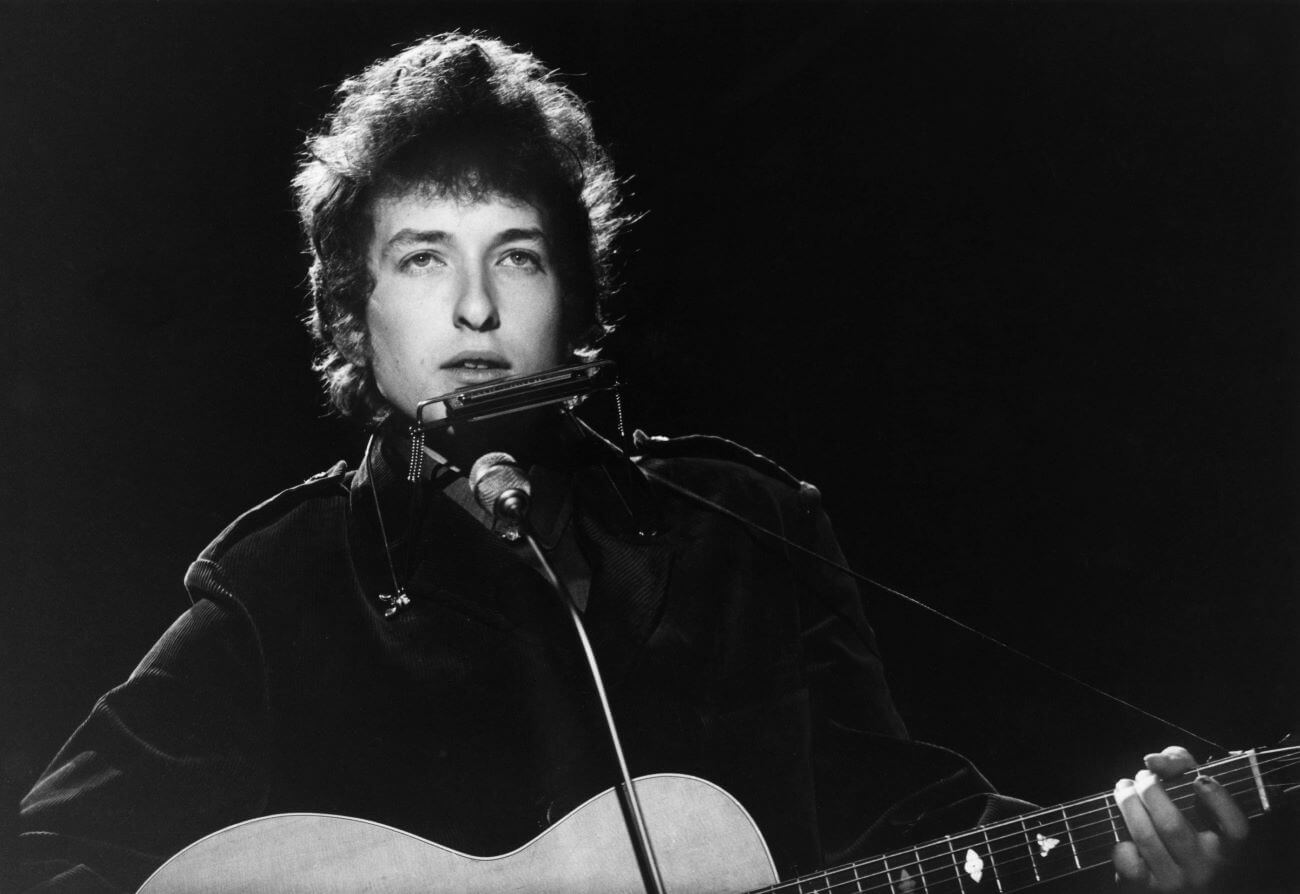
Bob Dylan Once Said That Anyone Who Doesn’t Understand His Music Is ‘Missing Something’
Bob Dylan has been in the music industry for decades. In that time, he’s written hundreds of songs from which fans continue to find meaning. Dylan utilizes metaphors, rich imagery, and literary references. To a casual listener, Dylan’s songs might come off as phantasmagoric; it’s not always easy to glean meaning from a dream sequence or an obscure reference to a Confederate poet. In the early 1960s, though, Dylan waved off people who said they didn’t understand his music.
Bob Dylan once rolled his eyes at people who didn’t understand his music
While Dylan started his career as a protest singer, he shifted away from the genre by the mid-1960s. The focus of his songs expanded greatly and he added electric instruments to his albums and live performances. This was a big change, but he didn’t get why anyone struggled to understand what he was doing.
“It’s all music; no more, no less. I know in my own mind what I’m doing,” he told The New York Times in 1965, adding, “If anyone has imagination, he’ll know what I’m doing. If they can’t understand my songs they’re missing something. If they can’t understand green clocks, wet chairs, purple lamps, or hostile statues, they’re missing something too.”
While reflecting years later, though, Dylan was a bit more clear when discussing the meaning of his music. He said each of his albums had to do with how he viewed America.
“Every one of the records I’ve made has emanated from the entire panorama of what America is to me,” he told Rolling Stone in 2001. “America, to me, is a rising tide that lifts all ships, and I’ve never really sought inspiration from other types of music. My problem in writing songs has always been how to tone down the rhetoric in using the language. I don’t really give it a whole lot of soulful thought. A song is a reflection of what I see all around me all the time.”
Some fans have dedicated themselves to finding meaning in Bob Dylan’s music
While Dylan said that listeners with creativity should be able to understand his music, it takes a bit of dedication to do it. Some of Dylan’s fans — self-proclaimed Dylanologists — have spent years unwinding meaning from his lyrics.
This doesn’t just mean listening to his songs over and over. Some fans collect items previously owned by Dylan to get a better understanding of him. One of the foremost Dylanologists was A.J. Weberman, who said he coined the term. He used to dig through Dylan’s trash for anything to help him understand the musician. He also wrote two 500-page books about subtext in Dylan’s music.
“Dylanology, a word I coined,” Weberman wrote in the introduction, per Salon, “is exclusively concerned with digging behind the text of Dylan’s poetry to find the subtext . . . ‘The Dylan To English Dictionary’ is years ahead of its time and like any new, controversial new [sic] theory — is found to meet with resistance from those who wish to maintain the cultural and academic status quo.”
If it takes two large books to convey the meaning of music, it may not be as easy to find meaning in his songs as Dylan made it seem.
The musician won a Nobel Prize for his writing
Regardless of how one feels about Dylan’s music, it’s hard to deny that he’s a skilled writer. In 2016, he won a Nobel Prize in Literature.
“Bob Dylan’s songs are rooted in the rich tradition of American folk music and are influenced by the poets of modernism and the beatnik movement,” reads the Nobel Prize’s official website. “Early on, Dylan’s lyrics incorporated social struggles and political protest. Love and religion are other important themes in his songs. His writing is often characterized by refined rhymes and it paints surprising, sometimes surreal imagery. Since his debut in 1962, he has repeatedly reinvented his songs and music. He has also written prose, including his memoirs Chronicles.”
Dylan was the first musician to receive the Nobel Prize in Literature.


